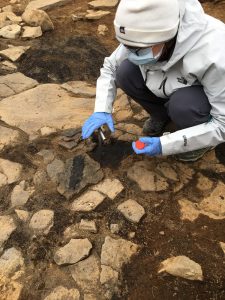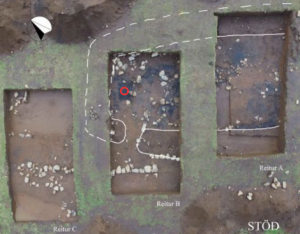Our journey east has brought us to part of Iceland with many unsolved mysteries and intriguing stories. Today, a fearless, soil sampling, drone-toting team of six went on a mission to the archeological site at Stöð, while the rest of the group divided and conquered to explore Egilsstaðir.

Rannveig, one of our hosts while we are at Skalanes, is currently studying the Stöð site as part of her Masters project. It is potentially one of the earliest Viking sites, dating from pre-settlement times. The dig is still at its early stages, but has revealed structural elements of two or more long houses and associated artefacts. Following up on an idea hatched on last year’s IFS trip, today Emi, Faith and Eila sampled 5 parts of the dig site in preparation for extracting the ancient DNA from the soil. We hope that the results will provide an extra dimension to our understanding of the inhabitants, giving us clues about what they hunted, ate and used for resources. Lilly, Merg and Andy were able to get aerial views of the site with the drone, similar to this one from 2017:

Meanwhile, in Egilsstaðir, delicious morsels were discovered and consumed in the excellent Salt café, and several went on to soak away the aches and pains of the travel days in the hot tubs and sauna of the local swimming pool. While some got a view of Lagarfljót, the lake that forms the picturesque backdrop to the town, none reported seeing the “Lagarfljót wyrm”, the legendary lake monster first sighted in 1345, and more recently capturing international attention via this “live footage”: